Beauregard-Keyes House
The Beauregard-Keyes House is a historic residence located at 1113 Chartres Street in the French Quarter, New Orleans, Louisiana. It is currently a museum focusing on some of the past residents of the house, most notably Confederate General Pierre Gustave Toutant Beauregard and American author Frances Parkinson Keyes.
Beauregard-Keyes House | |
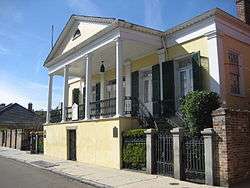 | |
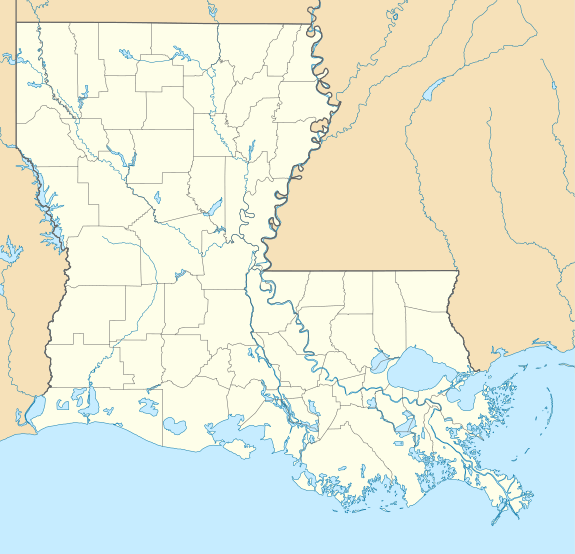 | |
| Location | 1113 Chartres St., New Orleans, Louisiana |
|---|---|
| Coordinates | 29°57′39″N 90°3′40″W |
| Built | 1826 |
| Architectural style | Greek Revival |
| NRHP reference No. | 75000853[1] |
| Added to NRHP | November 20, 1975 |
History
The property where the house would be built was originally owned by Ursuline nuns, who sold off parcels of their land in 1825.[2] The home was designed by François Correjolles and built by James Lambert in 1826 for auctioneer Joseph LeCarpentier.[3] In his design, Correjolles combined elements of a Creole cottage with Greek Revival features, including a Palladian façade.[4] In particular, he used Creole forms in the interior and on the rear elevation, as well as a cabinet gallery and detached outbuildings, but maintaining the American tradition of a central hall.[5] Consul of Switzerland John A. Merle became the owner in 1833 and his wife, Anais Philippon, added the adjoining garden.[3]
Beauregard
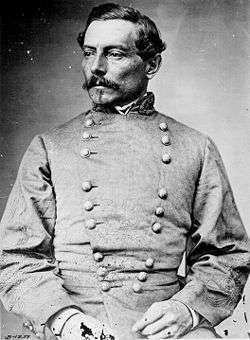
By 1865, the home was purchased by a local grocer named Dominique Lanata, who rented it out until 1904. His first tenants were the Beauregards.[6] Pierre Gustave Toutant Beauregard married his second wife, Caroline Deslonde, in 1860. Caroline was the daughter of André Deslonde, a sugar planter from St. James Parish. The newlyweds honeymooned briefly in the house.[7] Mrs. Beauregard died in 1864.
After the American Civil War, Beauregard returned to 1113 Chartres Street and lived in the house from 1866 to 1868.[8] He then moved with his son René and a widowed older sister to a home at 934 Royal Street, where he lived until 1875.[9]
In 1925, a new owner of the house wanted to tear it down to erect factories. Local women formed the Beauregard Memorial Association to preserve the home, though the garden could not be saved.[10]
Keyes
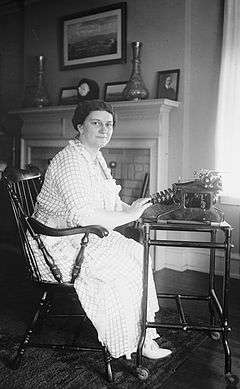
American author Frances Parkinson Keyes purchased the house at 1113 Chartres Street and made it her residence. While living at the house, Keyes wrote numerous books, one of which was set in the house and included Beauregard as a character: Madame Castel's Lodger. The 1962 novel explored Beauregard's emotional struggles as a twice-widowed Civil War veteran who refused to take the loyalty oath to the Union.[11] She also wrote a novel called The Chess Players, based on chess champion Paul Morphy, who was also the grandson of the original owner of the house, LeCarpentier.[6]
Modern history
Keyes began the restoration work on the house as early as 1945 when she hired architect Richard Koch to begin work. She also worked with a local group called the Garden Study Club to replant the garden to its 1830s–1860s look and rebuild the brick wall surrounding it.[6] The Orleans Parish Landmarks Commission installed a bronze plaque identifying the home's history in 1958.[3]
Today, the Beauregard-Keyes house is restored to its Victorian style and showcases items from Beauregard's family, as well as Keyes's studio and her collections of dolls and rare porcelain veilleuses (tea pots). The house is open for tours.[8]
Images of the building
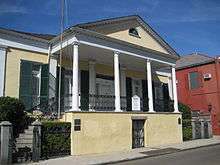 The Beauregard-Keyes House today
The Beauregard-Keyes House today The house in the early 1900s
The house in the early 1900s Plaque
Plaque
References
- "National Register Information System". National Register of Historic Places. National Park Service. March 13, 2009.
- Stuart, Bonnye. Haunted New Orleans: Southern Spirits, Garden District Ghosts, and Vampire Venues. Morris Book Publishing, 2012: 44. ISBN 978-0-7627-6437-2
- Huber, Leonard V. Landmarks of New Orleans. New Orleans: Louisiana Landmarks Society, 1991: 20. ISBN 1-879714-01-9
- Arrigo, Jan. Plantations & Historic Homes of New Orleans. Minneapolis: Voyageur Press, 2008: 30. ISBN 978-0-7603-2974-0
- Toledano, Roulhac. The National Trust Guide to New Orelans: The Definitive Guide to Architectural and Cultural Treasures. New York: John Wiley & Sons, 1996: 16. ISBN 0-471-14404-5
- Arrigo, Jan. Plantations & Historic Homes of New Orleans. Minneapolis: Voyageur Press, 2008: 32. ISBN 978-0-7603-2974-0
- http://www.civilwarwomenblog.com/2009/05/caroline-deslonde-beauregard.html
- http://www.bkhouse.org
- Toledano, Roulhac. The National Trust Guide to New Orelans: The Definitive Guide to Architectural and Cultural Treasures. New York: John Wiley & Sons, 1996: 39. ISBN 0-471-14404-5
- Stuart, Bonnye. Haunted New Orleans: Southern Spirits, Garden District Ghosts, and Vampire Venues. Morris Book Publishing, 2012: 47. ISBN 978-0-7627-6437-2
- Kaser, James A. The New Orleans of Fiction: A Research Guide. London: Rowman & Littlefield, 2014: 130. ISBN 978-0-8108-9199-9
External links
| Wikimedia Commons has media related to Beauregard-Keyes House. |
- Official website
- New Orleans' Beauregard-Keyes House & Gardens at PBS.org
- NOLA History: The Beauregard-Keyes House, by Edward Branley, February 4, 2013